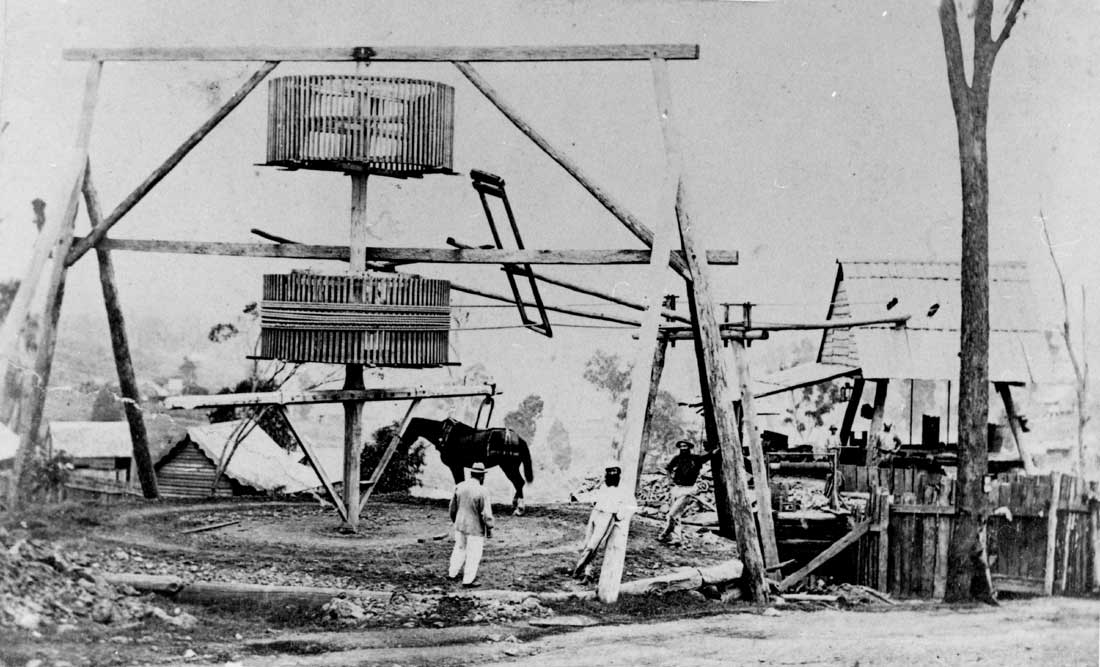 Horsedrawn whim on a gold field at Gympie, 1870-80
Horsedrawn whim on a gold field at Gympie, 1870-80
TLF ID R7996
This is a black-and-white photograph of the minehead area at a Queensland goldmine. It shows the mine's headframe and a horsedrawn 'whim'. The whim consists of a wooden derrick construction with two large vertically mounted drums at its centre, one with a rope wound around it. The rope is connected at one end to the swivel harness of a horse, which moves on a worn circular track. The other end of the rope is attached to a bucket that draws the load up and down the mine shaft (shown to the right, covered by an open-sided shed).
